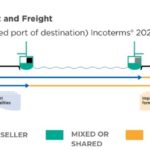By 2025, global IoT data generation is projected to hit 79.4 zettabytes annually (IDC), yet only 26% of companies report using it effectively for predictive analytics (McKinsey, 2025). That means much of the data collected through connected devices remains underutilized. The integration of AI and ML into IoT dashboards is no longer a nice-to-have—it’s a must.
With increasing demand for IoT Dashboard Development Services, organizations are building systems that go beyond visualization. They’re building intelligence. This article offers a technical guide to integrating AI and ML into IoT dashboards to unlock predictive insights and enable smarter, real-time decision-making.
What Is an IoT Dashboard?
An IoT dashboard is a web-based or mobile interface that collects, processes, and displays sensor data from IoT devices. It offers real-time visualization of critical metrics such as temperature, vibration, energy use, or GPS data.
But static charts are no longer enough. To compete in today’s fast-moving environments, businesses need predictive alerts, anomaly detection, and automated decision support. This is where AI and ML come in.
Why Integrate AI and ML?
Traditional IoT dashboards show what is happening. AI-powered dashboards can tell you what will happen next. Predictive insights offer:
- Reduced downtime through proactive maintenance
- Energy savings via forecasting models
- Fewer manual checks thanks to anomaly alerts
- Real-time decision support for dynamic environments
Example: A smart factory can use vibration data from motors and a trained ML model to predict bearing failure days in advance.
Architecture Overview
To integrate AI and ML into an IoT dashboard, you need a multi-layered system:
|
Layer |
Function |
|
IoT Devices |
Collect raw sensor data |
|
Edge Gateway |
Filter and transmit data |
|
Cloud Storage |
Store and organize historical data |
|
Data Pipeline |
Preprocess, clean, and enrich data |
|
ML Engine |
Run models for prediction and classification |
|
Visualization Layer |
Display metrics, forecasts, and alerts |
Step-by-Step Integration Guide
1. Data Collection & Preprocessing
Collect data from devices using protocols like MQTT, CoAP, or HTTP. Use gateways to normalize this data.
Preprocessing includes:
- Removing outliers
- Filling missing values
- Standardizing formats (e.g., timestamps)
- Normalizing sensor ranges
Tool examples: Apache NiFi, AWS Glue, Python Pandas
2. Choosing Machine Learning Models
Choose models based on your predictive goal:
|
Goal |
Recommended Algorithm |
|
Predictive Maintenance |
Random Forest, SVM |
|
Anomaly Detection |
Isolation Forest, Autoencoder |
|
Energy Forecasting |
LSTM Neural Networks |
|
Image/Object Detection |
Convolutional Neural Networks |
Use domain knowledge to define features that influence outcomes (e.g., vibration frequency for machinery).
3. Model Training
Train ML models using historical data. Split it into:
- 70% for training
- 15% for validation
- 15% for testing
Include data from different operational states: normal, faulty, and transitional.
Tools for training:
- TensorFlow
- PyTorch
- Scikit-learn
- AWS SageMaker
Tip: Use Jupyter notebooks for experimentation and model comparison.
4. Model Deployment
Deploy the trained model as a REST API using:
- Flask or FastAPI (for local testing)
- AWS Lambda with API Gateway (for serverless scaling)
- Azure ML Endpoints (for managed hosting)
The dashboard queries the API periodically to fetch real-time predictions.
Example: A temperature sensor sends hourly data to a cloud function that predicts overheating risk and returns a risk score.
5. Integrating with IoT Dashboards
Now plug predictive outputs into the UI. Show data such as:
- Anomaly scores
- Failure probabilities
- Time-to-failure estimates
Use:
- Graphs (e.g., D3.js, Chart.js)
- Gauges for thresholds
- Maps for location-based insights
Frameworks:
- React or Angular for frontend
- Grafana or Power BI for enterprise integration
Design tip: Use color-coded warnings—green for normal, yellow for caution, red for critical.
6. Real-Time Streaming and Inference
For real-time predictions, stream live sensor data into the ML engine:
- Apache Kafka for event ingestion
- Apache Flink or Spark Streaming for processing
- AWS Kinesis for cloud-native pipelines
Ensure low latency by running models at the edge or using GPU-accelerated endpoints.
Key Design Considerations
A. Retraining Models
Models should adapt to changing device behavior:
- Automate retraining with Apache Airflow or Kubeflow
- Monitor accuracy drift
- Use version control for reproducibility
B. Security
- Use end-to-end encryption (TLS)
- Authenticate API calls with OAuth2
- Store models securely (e.g., AWS S3 with IAM roles)
C. User Experience
- Design role-specific dashboards (technicians vs managers)
- Allow filters by device, location, and time range
- Enable alerts via email, SMS, or WhatsApp
Industry Use Cases
1. Manufacturing
Use Case: Predictive maintenance in assembly lines
- Input: Vibration and temperature sensors on motors
- ML Output: Remaining Useful Life (RUL) prediction
- Result: 30% reduction in unplanned downtime
2. Smart Cities
Use Case: Traffic congestion prediction
- Input: Real-time GPS and traffic flow data
- ML Output: Congestion heatmaps, route suggestions
- Result: 18% decrease in average travel time
3. Agriculture
Use Case: Soil moisture forecasting
- Input: Humidity, temperature, and rainfall sensors
- ML Output: Irrigation timing and volume
- Result: 40% water usage reduction
4. Healthcare
Use Case: Early detection of health deterioration
- Input: Heart rate, oxygen saturation, movement
- ML Output: Alert for abnormal vitals
- Result: 23% reduction in ICU admissions
Challenges and Solutions
|
Challenge |
Solution |
|
Data inconsistency |
Use schema validation and preprocessing tools |
|
High inference latency |
Move models closer to edge devices |
|
Model drift |
Schedule automated retraining |
|
Complex UI/UX |
Use modular, user-specific components |
Summary: Integration Roadmap
|
Step |
Tools/Platforms |
|
Data Ingestion |
MQTT, Kafka, HTTP |
|
Preprocessing |
Pandas, Apache NiFi |
|
Model Development |
Scikit-learn, TensorFlow, PyTorch |
|
Model Hosting |
Flask, FastAPI, AWS Lambda |
|
Dashboard Development |
React, Grafana, Power BI |
|
Real-time Inference |
Flink, Spark, AWS Kinesis |
Conclusion
AI and ML bring intelligence to IoT dashboards by enabling predictive analytics, real-time anomaly detection, and smarter decision-making. As sensor deployments grow, businesses must use IoT Dashboard Development Services not just to visualize data, but to predict what comes next.
Predictive insights are no longer optional. They’re the competitive edge for industries ranging from manufacturing to healthcare. Investing in the right architecture, models, and design will determine whether your IoT system simply reports—or truly thinks.
Frequently Asked Questions (FAQs)
1. What is the role of AI in IoT dashboard development?
AI enables IoT dashboards to move beyond simple data visualization by providing predictive analytics, anomaly detection, and decision-making capabilities. It helps interpret sensor data in real-time and forecast outcomes like equipment failure or energy demand.
2. Which machine learning algorithms are best for predictive maintenance in IoT?
For predictive maintenance, models like Random Forest, Support Vector Machines (SVM), and Gradient Boosted Trees work well with structured sensor data. Time-series models such as LSTM (Long Short-Term Memory) networks are ideal for sequential prediction tasks.
3. How do I integrate an ML model into my IoT dashboard?
You can deploy your trained ML model as an API using frameworks like Flask, FastAPI, or AWS Lambda. Your IoT dashboard then fetches predictions via this API and visualizes the output using charts, alerts, and indicators.
4. How often should ML models in IoT systems be retrained?
ML models should be retrained periodically—often monthly or quarterly—depending on data drift and system changes. Automated retraining pipelines using tools like Apache Airflow or Kubeflow help maintain accuracy over time.
5. What security measures are needed for AI-integrated IoT dashboards?
Use encrypted communication (TLS), authenticate APIs using OAuth2, and securely store models and data in controlled cloud environments. Role-based access and audit trails also help ensure data integrity and system trustworthiness.
- How to Integrate AI & ML with IoT Dashboards for Predictive Insights | IoT Dashboard Development Services
- Learn how to integrate AI and ML with IoT dashboards for real-time predictive insights. Discover tools, models, and best practices used in IoT Dashboard Development Services to enhance decision-making and reduce downtime.
- AI in IoT, IoT Dashboard Development Services, Predictive Analytics, Machine Learning Integration, Real-Time IoT Insights
Related posts:
 CIF Meaning in Shipping Explained: Cost, Insurance, and Freight
CIF Meaning in Shipping Explained: Cost, Insurance, and Freight
 Why Paystub Generator Free Tools Are Gaining Popularity in 2025
Why Paystub Generator Free Tools Are Gaining Popularity in 2025
 QuickBooks Payroll Error 17337: Solutions You Need Now QuickBooks
QuickBooks Payroll Error 17337: Solutions You Need Now QuickBooks
 From Livestreams to Global Clips: How QQAI.ai Is Turning AI Video Editing into a Worldwide Opportunity
From Livestreams to Global Clips: How QQAI.ai Is Turning AI Video Editing into a Worldwide Opportunity
 Call Center Monitoring & Performance Management: 11 Best Practices
Call Center Monitoring & Performance Management: 11 Best Practices
 Dynastar Electronics: Leading the Way in Guitar Amplifier Manufacturing
Dynastar Electronics: Leading the Way in Guitar Amplifier Manufacturing
 Time Champ: Streamlining Workforce Productivity with Precision
Time Champ: Streamlining Workforce Productivity with Precision
 SOC 3 Reports: The Public-Facing Proof Your Company Is Secure
SOC 3 Reports: The Public-Facing Proof Your Company Is Secure







